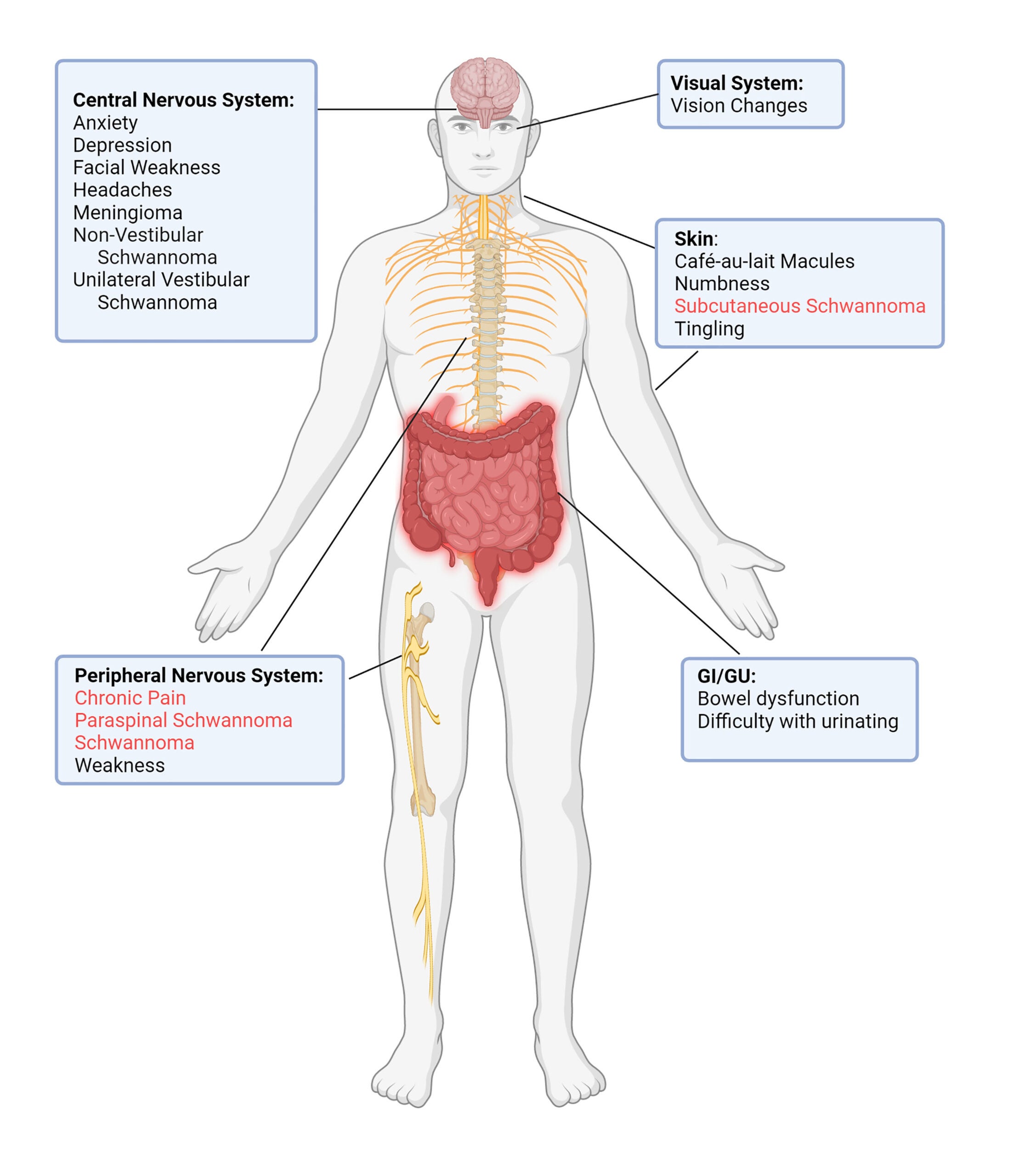Schwannomatosis

A schwannoma growing on the neck of a schwannomatosis patient
Schwannomatosis is a recently characterized third major form of Neurofibromatosis that lacks the hallmark bilateral acoustic (vestibular) schwannomas of NF2. Of the three types of neurofibromatosis, schwannomatosis is the least common, affecting less than 1 in 40,000. Schwannomas are benign tumors of Schwann cell origin and patients with schwannomatosis develop schwannomas throughout the body. These schwannomas can compress nearby nervous tissue and cause significant neurological impairment resulting in pain, numbness, and weakness of the extremities. The pain can be particularly debilitating and is often the first presenting symptom. Even after surgical removal of the tumor, the pain can still remain, indicating there are factors inherent to the nerves as the pain can occur in areas that do not have schwannoma. This is a major knowledge and clinical gap: why is there still pain and how can this pain be managed? Furthermore, schwannomas can undergo rare malignant transformation and cause life-threatening invasion of nearby vital organs. In schwannomatosis, schwannomas typically develop in adulthood. Management of the condition is based on each individual’s symptoms. Surgery can be performed to remove the schwannoma, although sometimes surgery is not possible due to the location of the tumor. In addition to NF2, several newly identified genes, including LZTR1 and SMARCB1, have been implicated in Schwannomatosis, however their molecular roles are poorly defined.
Using genetically engineered mouse models, the Le Lab has found that dysregulation of the Hippo pathway can mediate schwannoma formation, and that RAS/MAPK signaling can modify schwannoma development [JCI Insight, 5(20)141514]. These studies provide important insights into the molecular mechanisms underlying schwannoma development and offer promising targets for therapeutic strategies.
For more information, visit Neurofibromatosis Northeast, Neurofibromatosis Network, Neurofibromatosis Midwest, and Children’s Tumor Foundation.

Clinical Manifestations of Schwannomatosis (those in red are the most common)
